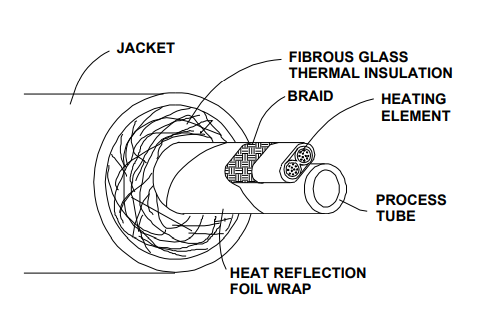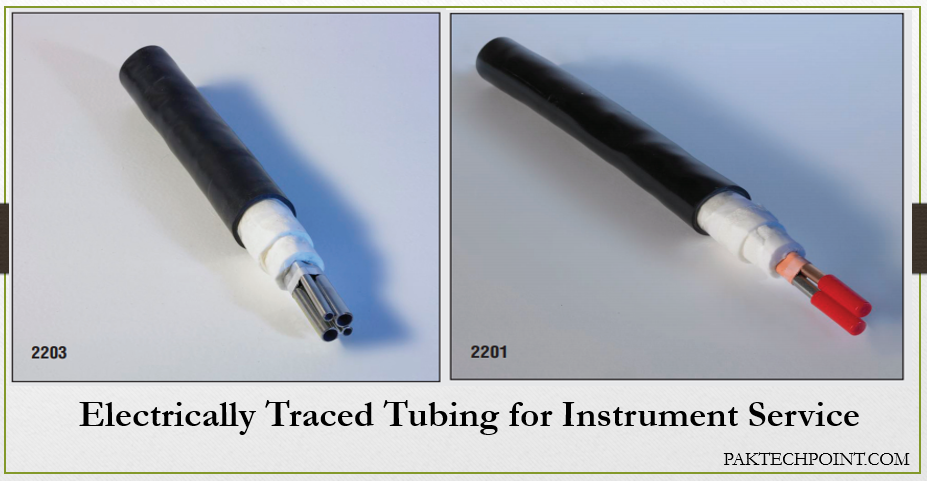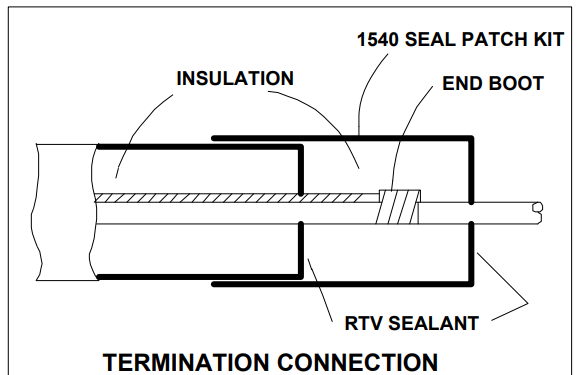1. Purpose -This engineering article defines the criteria for the selection of steam-traced tubing in instrument service.
2. SCOPE – This article applies to all field instrument packages except instrumentation for high-purity service.
3. RELATED ARTICLES
Copper Tubing, Brass Fittings, and Valves for Instrument Service.
Stainless Steel Tubing, Fittings, and Valves For Instrument Service 170 bar g (2500 psig) Maximum.
Stainless Steel Tubing, Fittings, and Valves for Instrument Service 415 bar g (6000 psig) Maximum.
4. Electrically Traced Tubing for Instrument Service
- Steam tracing of process and/or analytical tubing shall be used only when specified by the project scope.
- Steam-traced tubing bundles shall be specified as either “light-traced” or “heavy-traced.”
-
- Light-traced steam tubing shall be used to help prevent freezing and protect the process fluids against high-temperature degradation (steam tracer segregated from process tubing).
- Heavy-traced steam tubing shall be used when maintenance of higher process temperatures is important (steam tracer touching process tubing).
5. PROCESS TUBING MATERIAL SELECTION
- Individually traced tubing bundles shall be used for single process protection. When cost and ease of installation are required, multiple-tube construction (two tubes) shall be used.
- Copper tubing shall conform to Copper Tubing, Brass Fittings, and Valves for Instrument Service.
- Type 304L/304L or Type 316/316L stainless steel tubing shall conform to Stainless Steel Tubing, Fittings, and Valves for Instrument Service 170 bar g Maximum, or Stainless Steel Tubing, Fittings, and Valves for Instrument Service 415 bar g Maximum.
- Valves, fittings, and related material used to install copper or stainless steel shall be according to the appropriate material specifications 4PS52001A, 4PS52002A, and 4PS52003A.
6. STEAM-TRACER MATERIAL SELECTION
- Tracer-tubing bundles shall be either copper or stainless steel.
- Copper-tubing tracer systems are limited to a working pressure of 26.06 bar g (378 psig) at 204°C (400°F).
- Tracer tubing size shall be either 1/4″ or 3/8″. The tracer tubing size is determined by the available steam pressure, process temperature to be maintained, ambient temperature, and desired distance between steam traps. Note: Refer to supplier information about steam pressure, process temperature, and ambient temperature for maximum distance between steam traps.
- Stainless steel steam tracers shall be used when external corrosive conditions or tracer steam temperature/pressure require it.
- Insulation on stainless steel tubing shall be free of chlorides and sealed from the environment when used in areas that might contain environmental chlorides.
- Steam-traced tubing shall be specified as Dekoron type 2201/2203, Cellex type SP/MP or O’Brien type TPH1/TPH2 for heavy traced and Dekoron type 2202/2204, Cellex type S1/M1 or O’Brien type TPL1/TPL2 for light traced. All items are based on a working pressure at 204°C (400°F). For higher steam temperatures, consult with the manufacturer.
7. Electrically Traced Tubing Installation
- The supply header (installed by others) shall be at the highest point, and a shutoff valve (installed by others) shall be provided for each header.
- Each tracer shall be individually trapped to eliminate bypassing and recycling within a tracer system.
- Traced tube bundles shall slope downward continuously to avoid pockets and facilitate drainage.
- All exposed tracer tubing from the supply-header shutoff valve to the tie-in point of a traced bundle shall be protected with insulation tape. The connection fitting shall be exposed for maintenance.
- If the distance between the supply header shutoff valve and traced bundle is greater than 300 mm (12 in), preinsulated tubing shall be used to protect the tracer.
- Because the steam in a traced bundle condenses along the length of run, various steam pressures are limited. Before starting design, the steam supply pressure and temperature shall be defined.
- Steam traps are automatic valves that prevent the loss of steam by releasing condensate, air, and gases. Steam traps shall be located as close as possible to and below the end of a tracer.
- Installation of tube union fittings shall be avoided except at the beginning and end of each traced tubing bundle run. When they are necessary, they shall be made outside the insulation with expansion loops provided to prevent stress of fittings. The loops shall be insulated separately for personnel protection.
ELECTRICALLY TRACED TUBING INSTALLATION TECHNIQUES (DON’TS)
- DO NOT EXCEED MINIMUM BEND RADIUS.
- DO NOT EXCEED RECOMMENDED SUPPORT CENTERS.
- DO NOT OVER TIGHTEN SUPPORT CLAMPS-JACKET SHOULD NOT BE PINCHED.
- DO NOT TIE MULTIPLE RUNS TOGETHER TO FORM ONE BUNDLE-PROPER SPACING (1″ (25 mm) MINIMUM) IS REQUIRED FOR HEAT
- DO NOT SEVERELY CRIMP JACKET AS THIS MAY AFFECT INSULATION PROPERTIES, SOME SLIGHT CRIMPING CAN BE EXPECTED WITH HAND-FORMED BENDS.
- DO NOT REMOVE EXCESSIVE AMOUNTS OF JACKET AND INSULATION AT FITTINGS.
- DO NOT ALLOW THE HEATING ELEMENT TO BE IN CONTACT WITH THE SENSOR.
- DO NOT ROUTE ELECTRIC TRACE BUNDLES WHERE THE AMBIENT WILL BE ABOVE (49 °C)
ELECTRICALLY TRACED TUBING INSTALLATION TECHNIQUES (DOS)
- DO PROVIDE LONG, SWEEPING BENDS WHERE POSSIBLE
- DO SEAL ALL EXPOSED INSULATION WITH RTV END SEALANT.
- DO SEAL FITTINGS AND SPLICES WITH A SEAL PATCH
- DO STRIP JACKET TO MAKE TIGHT 90° BENDS-USE A UNION ELBOW WHERE TIGHT BENDS ARE NECESSARY AND SEAL INSULATION.
- DO USE A MANDREL TO ASSURE CONSTANT RADIUS BENDS WHERE POSSIBLE.
- DO SLOPE FOR CONDENSATE 1 IN (25 mm) PER FOOT.
- DO CHECK THAT ALL ELECTRICAL CONNECTIONS ARE TIGHT AND SEALED.
- DO CHECK THAT ALL CONNECTION BOX COVERS HAVE GASKETS AND ARE FASTENED TIGHTLY.
- DO SECURE END KITS WHEN USING TEFLON TUBE TRACE PRODUCTS TO REDUCE STRAIN ON THE FITTINGS.
SEALING TERMINATION END OF BUNDLE


